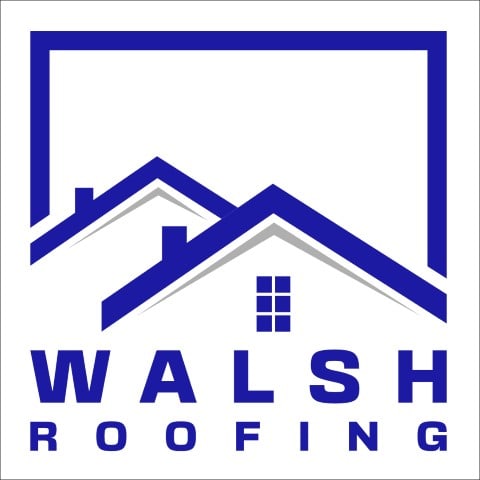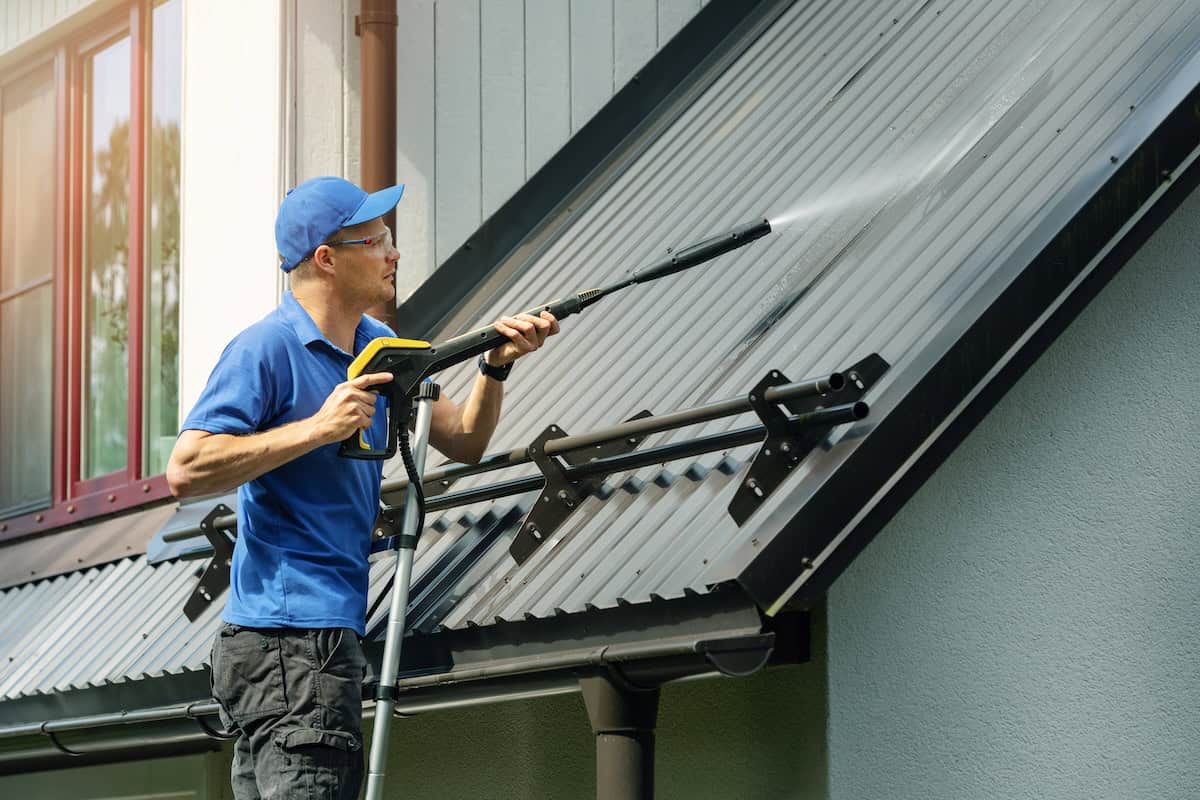Roof washing is one of the most effective ways to restore your roof’s appearance and improve your home’s overall curb appeal. Over time, dirt, algae, moss, and debris can stain and damage your roof, making it look aged well before its time. The good news is that with the right techniques and a professional touch, your roof can look refreshed and function more effectively.
Here’s why roof washing matters for homeowners:
- It prevents long-term damage caused by organic growth and grime.
- It extends the lifespan of your roof by reducing wear and tear.
- It dramatically improves your home’s exterior without major renovations.
Let’s walk through how roof washing works, why it’s necessary, and how Walsh Roofing ensures your home gets the best care possible.
⭐️ Why Your Roof Looks Dirty and What’s Really Happening
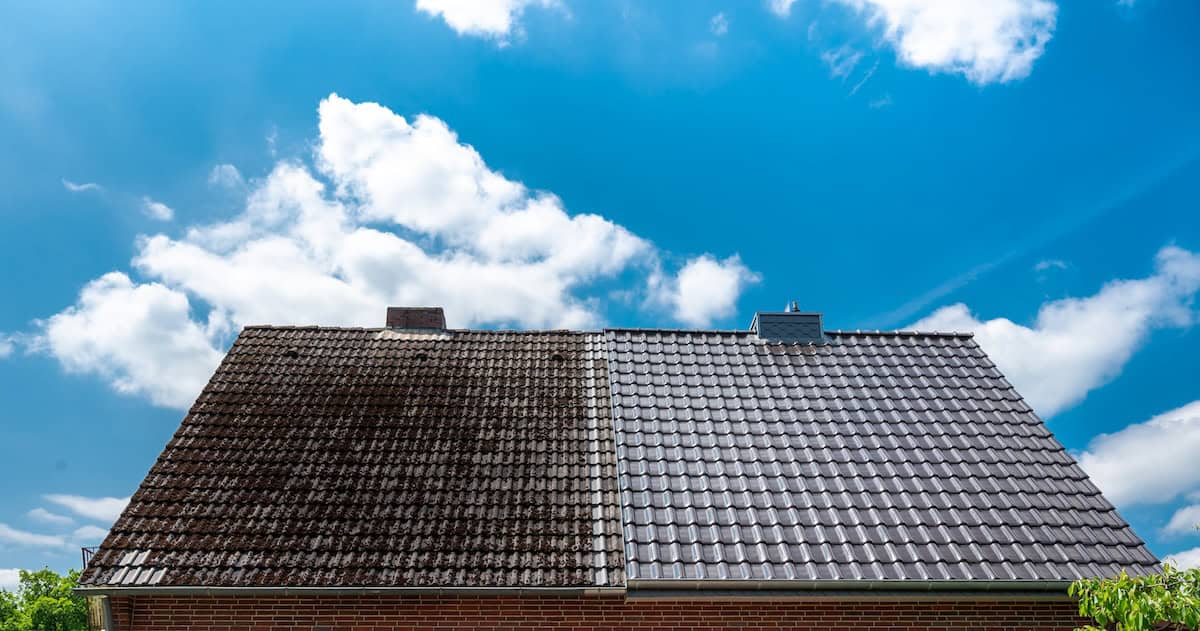
Algae and Mold Growth
Dark streaks on your shingles are often a type of airborne algae known as Gloeocapsa Magma. Once it settles on a moist surface, it feeds on limestone in your shingles. It doesn’t just look bad—it also retains moisture and accelerates roof deterioration.
Moss and Lichen Build-Up
Unlike algae, moss has roots. It grows thicker over time and can lift shingles, creating pockets where water can seep through and cause leaks. Lichens, a combination of algae and fungi, form tight bonds with the surface and are even harder to remove without the proper methods.
Dirt, Debris, and Pollen
Leaves, pine needles, and wind-blown dirt may not seem like a big deal, but they trap moisture and form the ideal environment for rot. When ignored, even a little debris can become a bigger problem.
🧽 Soft Washing vs. Pressure Washing: What’s Best for Your Roof?
What Is Soft Washing?
Soft washing uses low-pressure water mixed with eco-friendly cleaning agents to gently break down and remove stains and organic material from roofing surfaces. It’s the preferred method for most asphalt shingle roofs and is highly effective without being damaging.
Why Pressure Washing Is Risky
High-pressure systems can remove granules from shingles, reduce their protective capabilities, and even void your roof warranty. Pressure washing is sometimes used on metal or tile roofs, but should only be done by professionals with experience.
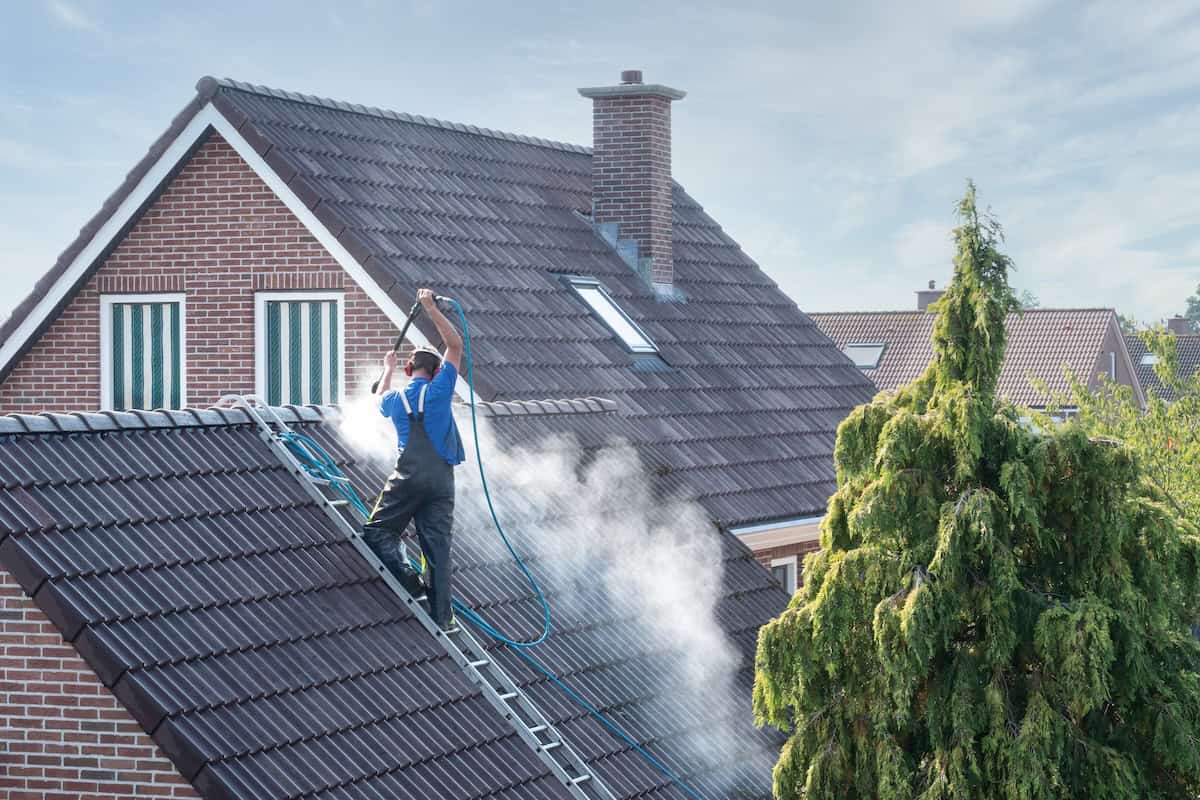
Walsh Roofing’s Method
We evaluate each roof’s condition and material before selecting the safest, most effective cleaning process. Most homeowners will benefit from a tailored soft wash that combines:
- Biodegradable detergents
- Algae and moss inhibitors
- Gentle rinse techniques
✅ The Roof Washing Process: Step-by-Step
Step 1: Inspection
We begin with a complete roof inspection. We assess shingle health, look for soft spots, check flashing and valleys, and identify any damage that could worsen during cleaning.
Step 2: Preparing the Property
We cover plants, secure furniture, and prepare the surrounding landscaping. A roof wash should improve your home’s condition, not create a mess around it.
Step 3: Applying Cleaning Solution
A specialized cleaning mix is sprayed onto the roof. This mixture sits long enough to break down algae and organic debris at the root level.
Step 4: Gentle Rinse and Spot Treatment
We gently rinse the roof and treat any stubborn spots with additional solution or brushing (as needed). This ensures a uniform result without excessive force.
Step 5: Final Inspection and Cleanup
Once the roof is clean, we walk the property with you to ensure satisfaction. We’ll also check gutters, downspouts, and surrounding areas for runoff or overspray.
❌ Common Roof Washing Mistakes to Avoid
- Using High-Pressure Equipment Incorrectly: Too much force can strip protective granules from asphalt shingles or crack tiles.
- Ignoring Weather Conditions: Washing during high heat or rain can dilute cleaning agents or cause uneven drying, leading to streaks or chemical burn.
- Not Protecting Landscaping: Overspray or chemical runoff can kill grass and plants if the job isn’t done with care.
- Skipping the Inspection: Missed cracks or damaged shingles may worsen during cleaning and lead to leaks.
Hiring Inexperienced Contractors: A cheap quote may cost more in the long run if your roof is damaged by improper techniques.
⏰ How Often Should You Wash Your Roof?
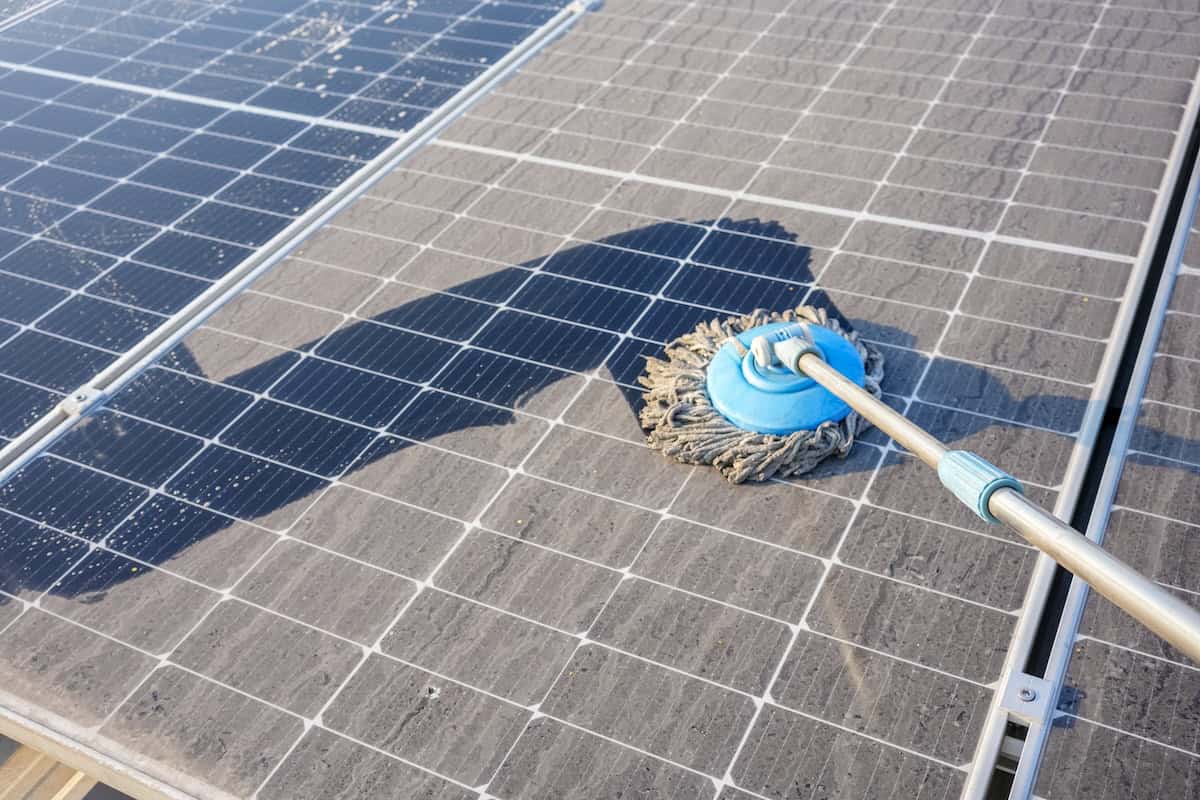
Based on Climate and Vegetation
If you live in a humid or shaded area, roof washing may be needed every 2–3 years. Homes with trees nearby often require more frequent cleaning due to falling debris and trapped moisture.
Signs It’s Time for a Wash
- Dark streaks or black patches
- Moss growing along edges or valleys
- Loss of curb appeal or home value
- You’re preparing to sell your home
Preventative Maintenance
Regular inspections and occasional gentle cleaning keep roofing material in peak condition. At Walsh Roofing, we offer maintenance packages to stay ahead of costly repairs.
🤝 Why Walsh Roofing Is the Team You Can Trust
Our team is made up of experienced professionals who understand roofing systems inside and out.
Your home deserves a roof that looks as good as it performs. Don’t let stains and organic buildup reduce the beauty and value of your property. Schedule your roofing project with Walsh Roofing today!
